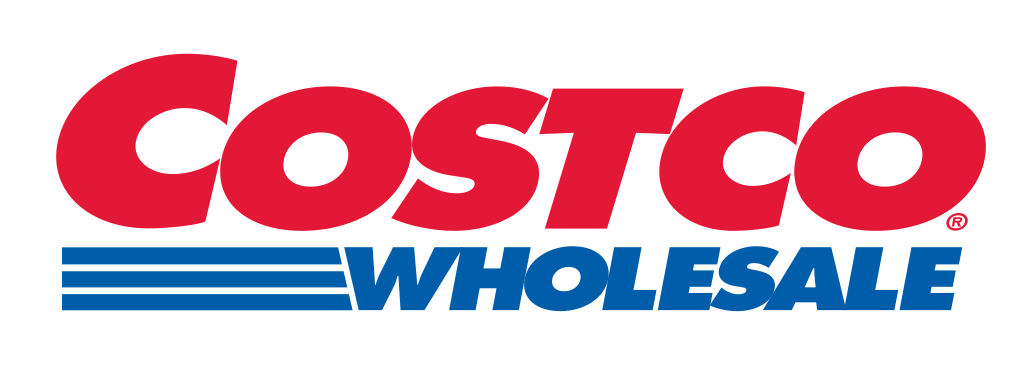
Costco is an exceptional exemplar of a promotional strategy that has propelled it to worldwide fame and created a blueprint for other retailers seeking to carve their path to success. With an annual net sales figure reaching a staggering $222.7 billion in 2022, Costco has secured its status as a retail powerhouse, rivalling the likes of Walmart and Amazon.
While its business model revolves around the simplicity of membership-only wholesale retail, the ingenious promotional techniques employed by Costco have been instrumental in driving sales, fostering customer loyalty, and maintaining a competitive edge.
In the following article, we’ll look at the various elements of Costco’s promotional strategy, uncovering its core components, the challenges faced, and the transformative action items that have secured its position. We’ll also consider the invaluable lessons retailing businesses of all sizes can learn from Costco’s promotional prowess and apply it to their commercial environment.
Costco’s Business Model: The Foundation of Success
At the heart of Costco’s promotional strategy lies its unique business model – the ‘warehouse club’ concept. This model is intricately intertwined with the ‘cash and carry’ approach, creating a retail ecosystem that thrives on efficiency, low prices, and direct engagement with customers. Key elements of this model include:
1. Direct Wholesale Sales:
Costco’s warehouse club model involves selling an array of wholesale items directly to its members from expansive warehouse-style stores. This model is tailored to both individual customers and small business proprietors, fostering a diverse customer base.
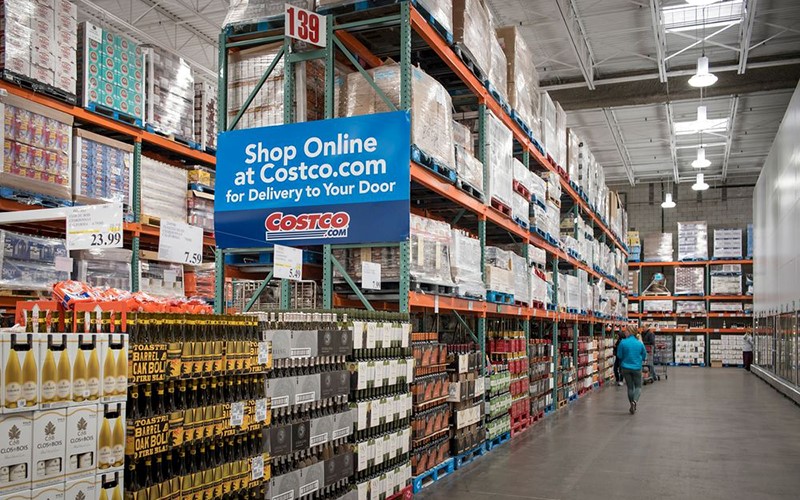
2. Customer-Centric Approach:
Customers at warehouse clubs purchase goods at wholesale prices and transport them home themselves, fostering a sense of involvement and immediacy in the shopping process. This contrasts with traditional wholesale retail, where invoices are issued upon delivery.
In addition to the “Warehouse Club”, Costco incorporates additional elements into its business model that are closely aligned with its pricing strategy. These elements contribute to the overall success of Costco’s promotional approach and further solidify its unique position as a retail success. Here are some of these elements:
1. Limited Product Selection: One distinct feature of Costco’s business model is its curated product selection. Instead of overwhelming customers with excessive options, Costco offers a limited selection of high-quality products. This approach simplifies the shopping experience for customers and allows Costco to negotiate better deals with suppliers, further driving down costs and facilitating the offering of competitive prices.
2. Private Label Brands: Costco significantly emphasises its private label brands, often called “Kirkland Signature” products. These private-label items provide Costco with greater control over pricing, quality, and branding. By offering high-quality alternatives to well-known national brands, Costco can price its private-label products attractively while maintaining healthy profit margins.
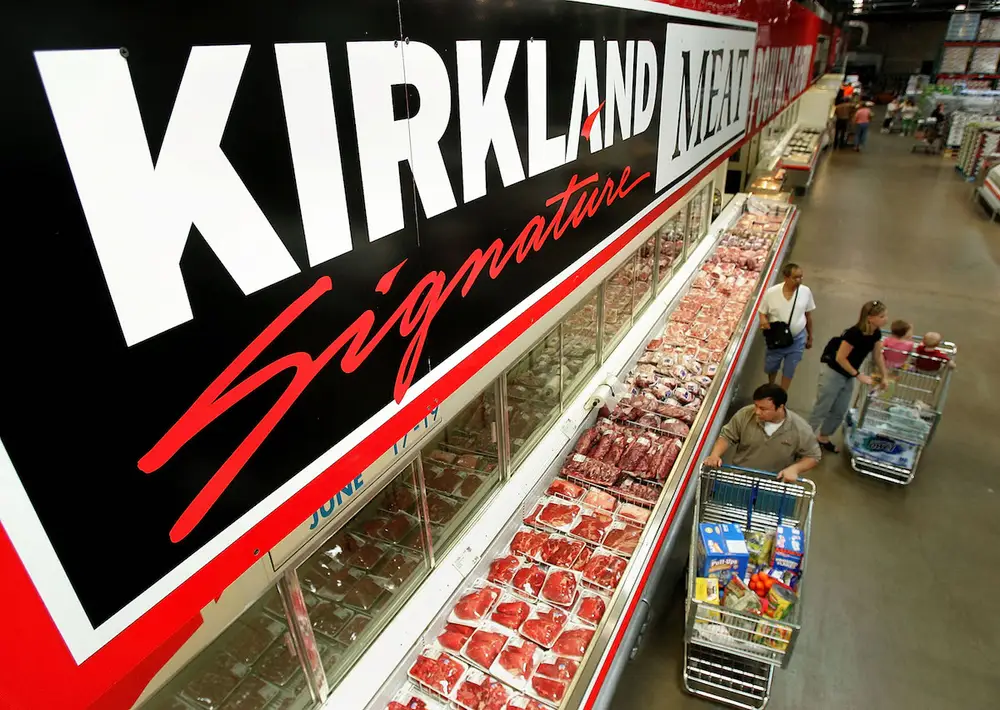
3. Rotating Product Offerings: Costco employs a dynamic product rotation strategy, regularly introducing new items while discontinuing others. This approach creates a sense of urgency and exploration among shoppers, encouraging them to visit repeatedly to discover new products. This strategy also aligns with Costco’s low-inventory, high-turnover model, minimising carrying costs and enabling better pricing.
4. Minimal Advertising Costs: Costco relies on a word-of-mouth approach, unlike many retailers that allocate substantial resources to advertising and marketing. By focusing on delivering exceptional value and an enjoyable shopping experience, Costco generates positive buzz and customer loyalty, reducing the need for extensive advertising expenditures.
5. Efficient Store Layout: Costco’s warehouse-style stores are designed for efficiency and cost savings. The layout is optimised to minimise operational expenses, and products are displayed on pallets or in bulk bins, reducing labour requirements and enhancing cost-effectiveness. This layout also facilitates quick restocking and enhances the overall shopping experience.

6. No-Frills Store Environment: Costco maintains a no-frills store environment, eschewing elaborate decor and extravagant displays. This approach not only reduces operational costs but also aligns with its focus on offering the best possible prices to customers.
These elements complement Costco’s pricing strategy by contributing to its ability to provide high-quality products at competitive prices. They showcase Costco’s dedication to maintaining a streamlined and efficient business model that resonates with its core values and resonates powerfully with its customer base.
Costco’s Membership System: The Power of Exclusivity and Upselling
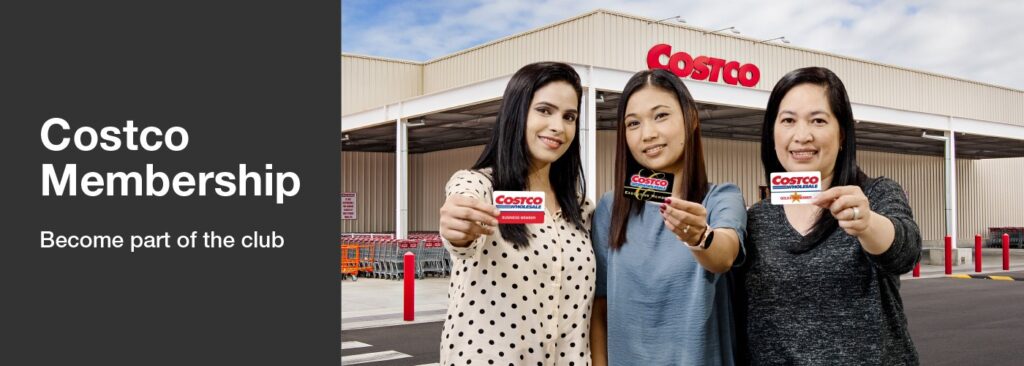
One of Costco’s most distinguishing features is its membership system, a strategic masterpiece that serves multiple purposes and augments its promotional endeavours:
1. Income Generation:
The membership fees, totalling $3.35 billion in 2019, serve as a crucial revenue stream for Costco. Rather than bolstering profits, these fees are reinvested to maintain competitive pricing, enhancing customer value.
2. Exclusivity and Brand Identity:
By requiring membership for access, Costco imparts a sense of exclusivity, setting it apart from conventional supermarkets. This exclusivity appeals to affluent shoppers and solidifies its status as a premium shopping destination.
3. Incentive for Upselling:
The tiered membership structure, exemplified by the Gold Star and Gold Star Executive options, incentivises customers to upgrade. The Executive membership, offering cashback rewards on purchases, creates a clear motivation for increased spending and cultivates loyalty.

Costco’s Pricing Strategy: A Delicate Balance of Margin and Value
Central to Costco’s promotional success is its pricing strategy, meticulously designed to maximise value while retaining a competitive edge:
1. Slim Margins, Bulk Pricing:
By maintaining a 14-15% markup above costs, Costco retains a slim average profit margin of 2%. This approach facilitates the provision of lower prices, a cornerstone of its value proposition.
2. Bulk Sales Advantage:
Selling products in bulk enables Costco to offer reduced prices while boosting average order sizes. This technique synergises with customer behaviour, encouraging larger purchases to leverage cost savings.
3. Product Bundling Parallels:
Costco’s bulk pricing strategy draws parallels with product bundling, a tactic applicable across various industries. The success of this approach emphasises the potential of bundling as a promotional tool.
Additional Incentives: Elevating Customer Experience
Beyond its membership and pricing strategies, Costco leverages additional incentives to enhance the customer experience and bolster its promotional efforts:
1. Free Samples:
Distributing free samples of edible products fosters trial and increases the likelihood of subsequent purchases. This strategy is integral to Costco’s immersive shopping experience.
2. Food Court Delights:
Costco’s food court, offering budget-friendly meals like the iconic “quarter-pound hot dog”, enhances foot traffic and promotes customer engagement through affordable yet quality offerings.

3. Petrol/Gasoline Advantage:
Selling petrol/gasoline at a small profit allows Costco to provide cost-effective fuel, attracting customers and boosting membership renewals.
Challenges Faced and Triumphs Achieved: The Costco Journey
While Costco’s promotional strategy appears seamless, it has been full of challenges. Over time, the brand has encountered and conquered obstacles to solidify its successful position further:
1. Balancing Exclusivity and Accessibility:
Striking the right balance between exclusivity and accessibility posed a challenge. However, Costco managed this by targeting affluent shoppers while ensuring value for all members.
2. Supply Chain Efficiency:
Maintaining consistent stock levels in vast warehouses requires meticulous supply chain management. Costco’s investments in efficient inventory management systems and logistics infrastructure addressed this concern.
3. Membership Perceived Value:
As membership fees increased, Costco addressed concerns by continually enhancing membership benefits, such as introducing cashback rewards and exclusive products.
Case Studies
Below are three case studies demonstrating some of the challenges Costco faced with its promotional strategy. Each case study outlines the challenges faced with the original strategy, the adjustment to the promotional plan undertaken by Costo and the outcomes achieved.
Case Study 1: Electronics and Tech Gadgets

Original Strategy: Costco’s initial electronics and tech gadgets strategy focused on offering competitive prices and a limited selection of popular brands. The emphasis was on providing value to members through bulk purchasing and reduced markup.
Challenges: While Costco’s pricing strategy successfully attracted customers, it faced challenges in differentiating itself in the highly competitive electronics market. Customers often associated Costco with bulk household items and the perception of the store as a destination for premium electronics needed enhancement.
Action Taken: Costco revamped its promotional strategy for electronics by introducing exclusive product bundles and partnerships with well-known tech brands. The store also invested in creating dedicated tech sections within its warehouses, featuring interactive displays and knowledgeable staff. This approach aimed to elevate the shopping experience and showcase Costco as a credible destination for quality tech products.
Results Achieved: The adjusted promotional strategy led to increased foot traffic in the electronics sections of Costco stores. Customers responded positively to the enhanced shopping experience, and the exclusive product bundles garnered attention. As a result, Costco saw a significant boost in sales and profitability in the electronics category. The initiative attracted new customers and increased the frequency of visits from existing members seeking the latest tech gadgets.
Case Study 2: Organic and Healthy Foods

Original Strategy: Costco’s initial strategy for organic and healthy foods revolved around offering a selection of these products at competitive prices, aligning with its overall value proposition.
Challenges: As the demand for organic and healthy foods grew, Costco needed help in meeting the diverse preferences of health-conscious consumers. The initial strategy of providing essential organic products did not cater to its customer base’s varying dietary needs and preferences.
Action Taken: Costco undertook a comprehensive review of its organic and healthy foods category and introduced a wider range of products, including gluten-free, plant-based, and specialty items. The store also collaborated with local producers and suppliers to source unique and region-specific organic products. Additionally, Costco implemented educational initiatives, such as in-store workshops and cooking demonstrations, to inform customers about the benefits of different products.
Results Achieved: The adjusted strategy resulted in a surge in sales and increased profitability within the organic and healthy foods category. Costco’s expanded product range and emphasis on education resonated with health-conscious consumers, who appreciated the variety and quality of offerings. The initiative also bolstered Costco’s reputation as a destination for health-focused shopping, attracting new members and fostering loyalty among existing ones.
Case Study 3: Online and E-Commerce

Original Strategy: Costco’s initial e-commerce strategy focused on providing an online extension of its in-store offerings, with a limited selection of products available for online purchase.
Challenges: As online shopping gained traction, Costco faced challenges keeping up with evolving consumer preferences and expectations for online retail experiences. The original strategy, while convenient for members, lacked the breadth and depth of products available through competitors’ e-commerce platforms.
Action Taken: Costco overhauled its online presence by expanding its e-commerce offerings and optimising the online shopping experience. The store introduced a more comprehensive range of products available for online purchase, including exclusive online-only items. It also invested in improving website functionality, user interface, and mobile compatibility to enhance online shopping.
Results Achieved: The adjusted e-commerce strategy led to a substantial increase in online sales and profitability. By offering a more comprehensive and user-friendly online shopping experience, Costco attracted a broader customer base, including those who preferred online shopping over in-store visits. The success of the e-commerce initiative contributed to Costco’s overall revenue growth and reinforced its position as an industry leader in physical and online retail.
These case studies highlight Costco’s adaptability and proactive approach to refining its promotional strategies in response to changing market dynamics and consumer demands. In each case, Costco identified challenges, took targeted actions to address them, and reaped substantial rewards in terms of increased sales, customer engagement, and profitability.
Actionable Insights for Retailers: Lessons from the Costco Playbook
Drawing from Costco’s monumental success, here are ten actionable items retailers can incorporate into their promotional strategies to foster growth, customer loyalty, and sustained success:
1. Implement a Tiered Membership System: Develop a membership structure that offers varying benefits, motivating customers to upgrade and engage with your brand.
2. Cultivate Exclusivity: Foster a sense of exclusivity through membership-based access, appealing to target audiences and enhancing brand identity.
3. Loyalty Programs as Membership Strategies: Craft loyalty programs akin to membership strategies, incentivising repeat purchases and fostering brand loyalty.
4. Strategic Pricing: Adopt a pricing strategy that balances slim margins with bulk pricing, maximising value for customers while maintaining profitability.
5. Bulk Sales and Product Bundling: Leverage the power of bulk sales and product bundling to encourage larger purchases and provide cost-effective options.
6. Enhance Customer Experience: Integrate free samples, food courts, and additional incentives to elevate the shopping experience and engage customers.
7. Supply Chain Excellence: Invest in robust supply chain management to ensure efficient inventory levels and seamless operations.
8. Continuous Membership Value: Regularly enhance the value proposition of memberships to address customer concerns and maintain loyalty.
9. Consistent Pricing Appeal: Maintain consistent pricing on popular items to create a sense of reliability and attract price-conscious consumers.
10. Innovate and Adapt: Continuously innovate and adapt your promotional strategies to meet evolving customer preferences and market dynamics.
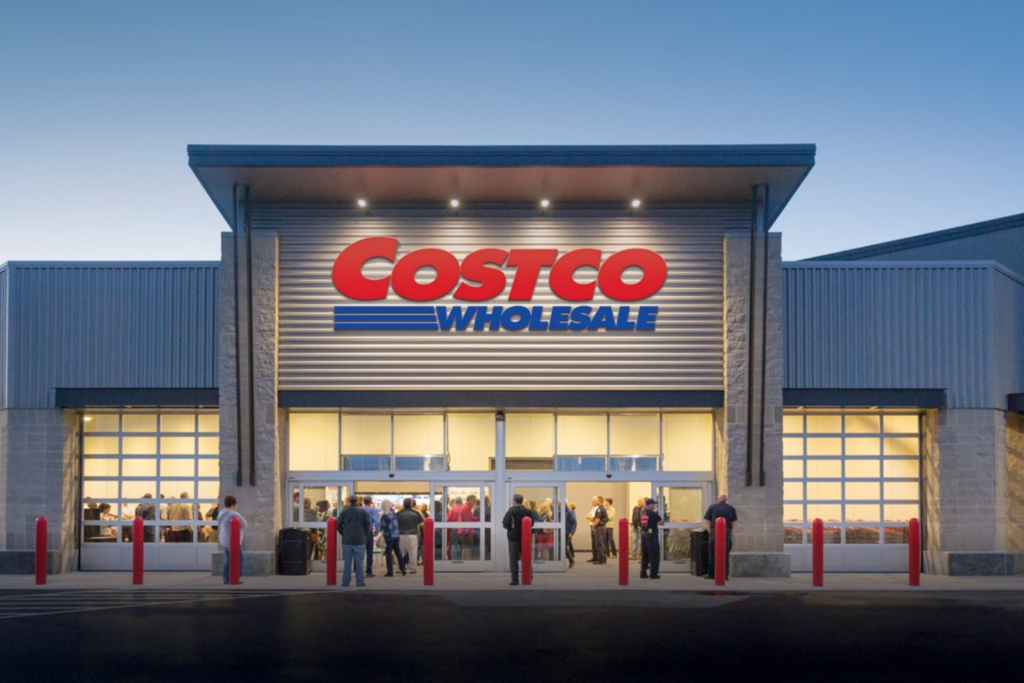
Costco’s promotional strategy stands as a testament to the potential of innovative thinking, customer-centricity, and strategic execution. From its membership system to pricing tactics and additional incentives, Costco has curated a holistic approach that reverberates across industries. Challenges encountered along the way have been overcome through thoughtful action items, solidifying its position as a retail behemoth. As businesses embark on their own promotional journeys to retail excellence, many significant lessons can be learned from Costco’s evolution.
Pricing Insight has supported Australia’s leading retailers to develop promotional pricing strategies. Please reach out if you would like assistance with your promotional strategy, pricing, or marketing strategy.





